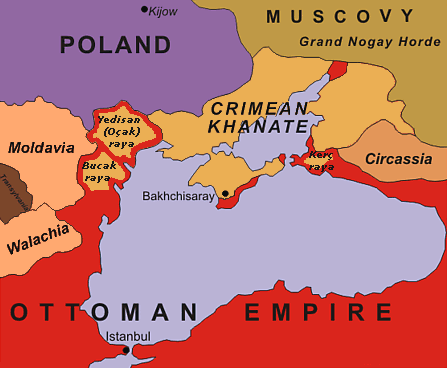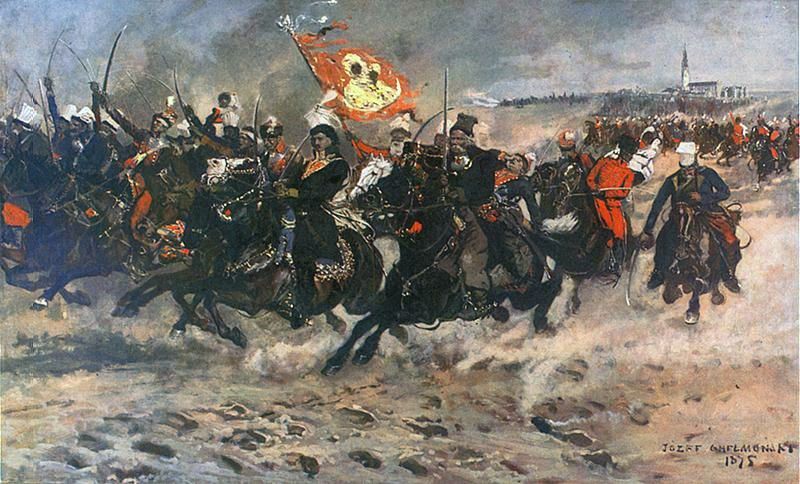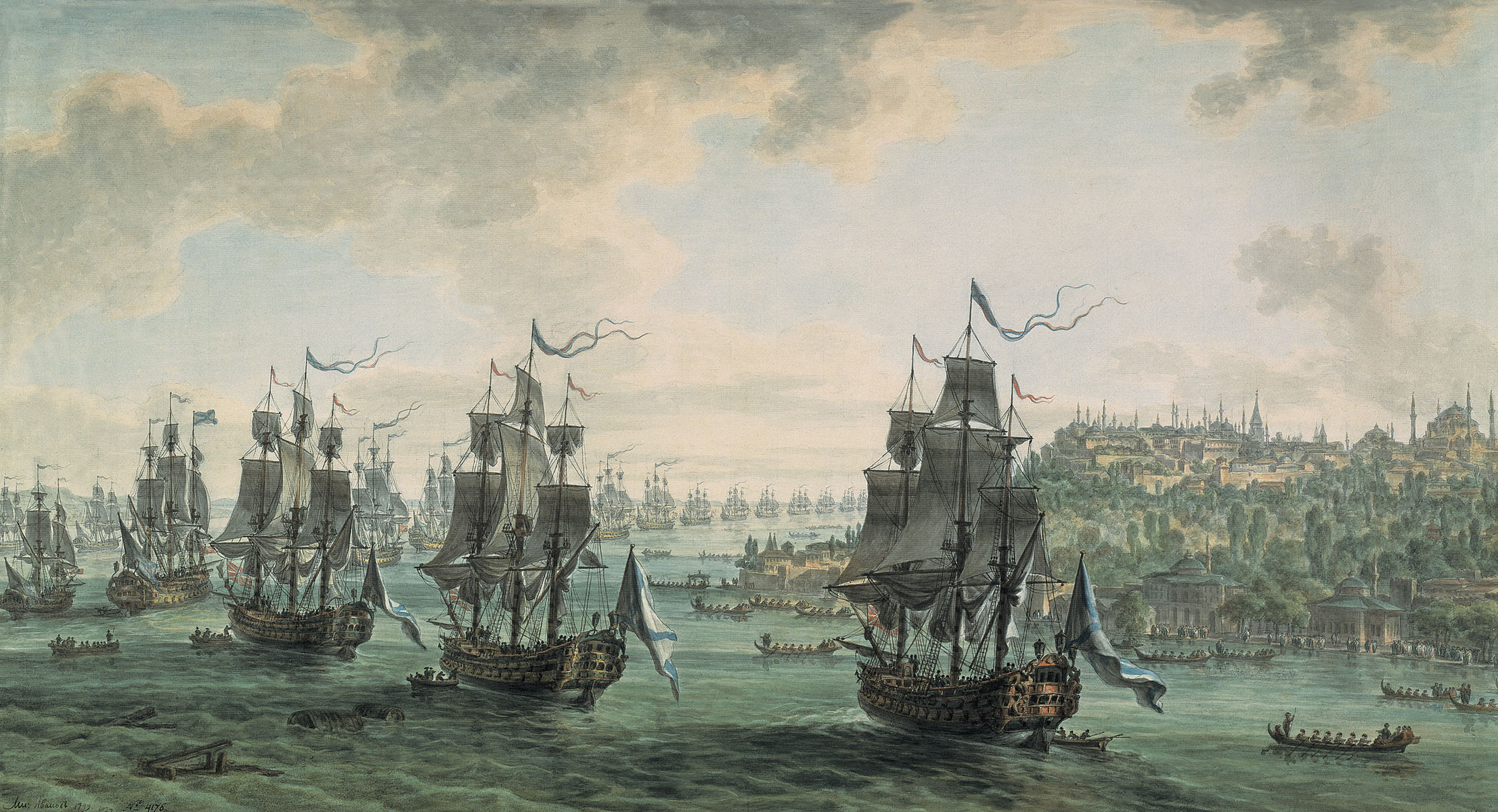|
Catherine II
Catherine II. (born Princess Sophie of Anhalt-Zerbst; 2 May 172917 November 1796), most commonly known as Catherine the Great, was the reigning empress of Russia from 1762 to 1796. She came to power after overthrowing her husband, Peter III of Russia, Peter III. Under her long reign, inspired by the ideas of the Age of Enlightenment, Enlightenment, Russia experienced a renaissance of culture and sciences, which led to the founding of many new cities, universities, and theatres, along with large-scale immigration from the rest of Europe and the recognition of Russia as one of the great powers of Europe. In her accession to power and her rule of the empire, Catherine often relied on her noble favourites, most notably Count Grigory Orlov and Grigory Potemkin. Assisted by highly successful List of Russian field marshals, generals such as Alexander Suvorov and Pyotr Rumyantsev, and List of Russian admirals, admirals such as Samuel Greig and Fyodor Ushakov, she governed at a time ... [...More Info...] [...Related Items...] OR: [Wikipedia] [Google] [Baidu] |
Empress Of Russia
The emperor and autocrat of all Russia (, ), also translated as emperor and autocrat of all the Russias, was the official title of the Russian monarch from 1721 to 1917. The title originated in connection with Russia's victory in the Great Northern War (17001721) and appeared as an adaptation of the tsar's title under the accepted system of titling in Europe. The title was transformed from the previous title of tsar and grand prince of all Russia. The old title ''tsar'' (or ''tsaritsa'') continued to be popularly used to refer to the emperor (or empress) until the monarchy was abolished in 1917. Title Article 1 of the '' Fundamental Laws of the Russian Empire'' stated that "the Emperor of All Russia is an autocratic and unrestricted monarch. To obey his supreme authority, not only out of fear but out of conscience as well, God himself commands". The full title of the emperor in the 20th century (Art. 37 of the Fundamental Laws) was: Tsarist autocracy History Peter I ... [...More Info...] [...Related Items...] OR: [Wikipedia] [Google] [Baidu] |
Grigory Orlov
Prince Grigory Grigoryevich Orlov (; 17 October 1734 – 24 April 1783) was a favourite of the Empress Catherine the Great of Russia, Prince of the Holy Roman Empire (1772), state and military figure, collector, patron of arts, and General-in-Chief. He patronised M. V. Lomonosov, D. I. Fonvisin, V. I. Bazhenov and gave them financial support. Honorary member of the Imperial Academy of Arts (since 1765). He collected paintings (including Rembrandt, P. P. Rubens, Titian), sculpture, Chinese, Japanese and Russian porcelain, hunting weapons, etc. (Orlov's collection has been preserved almost completely; it is now in the State Museum-Reserve "Gatchina" of the eponymous city). A large landowner, particularly of the Gatchina manor, where Orlov commissioned the construction of a palace and a landscape garden. He became a leader of the 1762 coup which overthrew Catherine's husband Peter III of Russia and installed Catherine as empress. For some years he was virtually co-ruler ... [...More Info...] [...Related Items...] OR: [Wikipedia] [Google] [Baidu] |
Novorossiya
Novorossiya rus, Новороссия, Novorossiya, p=nəvɐˈrosʲːɪjə, a=Ru-Новороссия.ogg; , ; ; ; "New Russia". is a historical name, used during the era of the Russian Empire for an administrative area that would later become the southern mainland of Ukraine: the region immediately north of the Black Sea and Crimea. The name ''Novorossiya'', which means "New Russia", entered official usage in 1764, after the Russian Empire conquered the Crimean Khanate, and annexed its territories,"Plan for the Colonization of New Russia Gubernia" issued by the Governing Senate, Russian Senate �New Russia Guberniaat the Encyclopedia of Ukraine when Novorossiya Governorate (or Province) was founded. Official usage of the name ceased after 1917, when the entire area (minus Crimea) was annexed by the Ukrainian People's Republic, precursor of the Ukrainian SSR. Novorossiya Governorate was formed in 1764 from Military occupation, military frontier regions and parts of the left-ba ... [...More Info...] [...Related Items...] OR: [Wikipedia] [Google] [Baidu] |
Kingdom Of Great Britain
Great Britain, also known as the Kingdom of Great Britain, was a sovereign state in Western Europe from 1707 to the end of 1800. The state was created by the 1706 Treaty of Union and ratified by the Acts of Union 1707, which united the Kingdom of England (including Wales) and the Kingdom of Scotland to form a single kingdom encompassing the whole island of Great Britain and its outlying islands, with the exception of the Isle of Man and the Channel Islands. The unitary state was governed by a single Parliament of Great Britain, parliament at the Palace of Westminster, but distinct legal systems—English law and Scots law—remained in use, as did distinct educational systems and religious institutions, namely the Church of England and the Church of Scotland remaining as the national churches of England and Scotland respectively. The formerly separate kingdoms had been in personal union since the Union of the Crowns in 1603 when James VI of Scotland became King of England an ... [...More Info...] [...Related Items...] OR: [Wikipedia] [Google] [Baidu] |
Russo-Turkish War (1768–1774)
The Russo-Turkish wars ( ), or the Russo-Ottoman wars (), began in 1568 and continued intermittently until 1918. They consisted of twelve conflicts in total, making them one of the longest series of wars in the history of Europe. All but four of these wars ended in losses for the Ottoman Empire, which was undergoing a period of stagnation and decline. Conversely, they showcased the ascendancy of the Russian Empire as a significant European power after Peter the Great oversaw extensive modernization efforts in the early 18th century. Ultimately, however, the end of the Russo-Turkish wars came about with the dissolution of the two belligerents' respective states as a consequence of World War I: the Russian Empire collapsed in 1917 and was ultimately succeeded by the Union of Soviet Socialist Republics in 1922; while the Ottoman Empire was partitioned between 1918 and 1922 and succeeded by the Republic of Turkey in 1923. History Initial and intermediate phases (1568–1739) ... [...More Info...] [...Related Items...] OR: [Wikipedia] [Google] [Baidu] |
Ottoman Empire
The Ottoman Empire (), also called the Turkish Empire, was an empire, imperial realm that controlled much of Southeast Europe, West Asia, and North Africa from the 14th to early 20th centuries; it also controlled parts of southeastern Central Europe, between the early 16th and early 18th centuries. The empire emerged from a Anatolian beyliks, ''beylik'', or principality, founded in northwestern Anatolia in by the Turkoman (ethnonym), Turkoman tribal leader Osman I. His successors Ottoman wars in Europe, conquered much of Anatolia and expanded into the Balkans by the mid-14th century, transforming their petty kingdom into a transcontinental empire. The Ottomans ended the Byzantine Empire with the Fall of Constantinople, conquest of Constantinople in 1453 by Mehmed II. With its capital at History of Istanbul#Ottoman Empire, Constantinople (modern-day Istanbul) and control over a significant portion of the Mediterranean Basin, the Ottoman Empire was at the centre of interacti ... [...More Info...] [...Related Items...] OR: [Wikipedia] [Google] [Baidu] |
Bar Confederation
The Bar Confederation (; 1768–1772) was an association of Polish nobles (''szlachta'') formed at the fortress of Bar, Ukraine, Bar in Podolia (now Ukraine), in 1768 to defend the internal and external independence of the Polish–Lithuanian Commonwealth against Russian Empire, Russian political influence and against King Stanisław August Poniatowski, Stanislaus II Augustus with Polish reformers, who were attempting to limit the power of the Commonwealth's wealthy magnates. The founders of the Bar Confederation included the magnates Adam Stanisław Krasiński, the bishop of Kamianets-Podilskyi, Kamieniec, Karol Stanisław Radziwiłł (1734–1790), Karol Stanisław Radziwiłł, Casimir Pulaski, his father and brothers and Michał Hieronim Krasiński. Its creation led to a civil war and contributed to the First Partition of Poland. Maurice Benyovszky was the best known European Bar Confederation volunteer, supported by Roman Catholic France and Austria. Some historians consider ... [...More Info...] [...Related Items...] OR: [Wikipedia] [Google] [Baidu] |
Crimean Khanate
The Crimean Khanate, self-defined as the Throne of Crimea and Desht-i Kipchak, and in old European historiography and geography known as Little Tartary, was a Crimean Tatars, Crimean Tatar state existing from 1441 to 1783, the longest-lived of the Turkic peoples, Turkic khanates that succeeded the empire of the Golden Horde. Established by Hacı I Giray in 1441, it was regarded as the direct heir to the Golden Horde and to Cumania, Desht-i-Kipchak. In 1783, violating the 1774 Treaty of Küçük Kaynarca (which had guaranteed non-interference of both Russia and the Ottoman Empire in the affairs of the Crimean Khanate), the Annexation of the Crimean Khanate by the Russian Empire, Russian Empire annexed the khanate. Among the European powers, only France came out with an open protest against this act, due to the longstanding Franco-Ottoman alliance. Naming and geography The Crimean Khans, considering their state as the heir and legal successor of the Golden Horde and Desht-i Kipcha ... [...More Info...] [...Related Items...] OR: [Wikipedia] [Google] [Baidu] |
Fyodor Ushakov
Admiral Fyodor Fyodorovich Ushakov ( rus, Фёдор Фёдорович Ушаков, Fëdor Fëdorovič Ušakov, p=ʊʂɐˈkof; – ) was an Imperial Russian Navy officer best known for his service in the French Revolutionary and Napoleonic Wars. He won every engagement he participated in as the admiral of the Russian fleet. Life and naval career Ushakov was born in the village of Burnakovo in the Yaroslavl province, Moscow Gubernia, to a modest family of the minor nobility. His father, Fyodor Ignatyevich Ushakov, was a retired sergeant of the Preobrazhensky Regiment of the Russian Imperial guards. By the time Fyodor Ushakov submitted his statement of background (''skaska'') to the military, his family had not been officially confirmed in the so-called ' dvoryanstvo', yet they surely belonged to serving gentry. In the submission Ushakov stated that he neither had a coat-of-arms, nor a royal patent for a landed estate, and had no way to prove nobility. In 1798, Ushakov ... [...More Info...] [...Related Items...] OR: [Wikipedia] [Google] [Baidu] |
Samuel Greig
Samuel Greig, also known as Samuil Karlovich Greig (; 30 November 1735 – ), was a Scottish-born Russian admiral who distinguished himself in the Battle of Chesma (1770) and the Battle of Hogland (1788). His son Alexey Greig also made a spectacular career in the Imperial Russian Navy. Early life Samuel Greig was born on 30 November 1735 in the burgh of Inverkeithing in Fife. Initially he worked as a seaman on his father's ships, then entered the Royal Navy before 1758 as a master's mate.Cross, Anthony (August 2007) 'By the Banks of the Neva: Chapters from the Lives and Careers of the British in Eighteenth-Century Russia', Cambridge University Press, He was present at naval engagements at the Capture of Gorée (1758), the Battle of Quiberon Bay (1759) and the Battle of Havana (1762). He was promoted to acting lieutenant in 1761 but the Royal Navy took several years to confirm this rank. When Catherine II of Russia became Empress in 1762 the Imperial Russian ... [...More Info...] [...Related Items...] OR: [Wikipedia] [Google] [Baidu] |
List Of Russian Admirals
This list of Russian admirals includes the admirals of Russian Navy ranks, all ranks, serving in the Russian Imperial Navy, the Soviet Navy and the modern Russian Navy. See also the categories :Imperial Russian Navy admirals and :Soviet admirals. Alphabetical list __NOTOC__ A *Pavel Sergeyevich Abankin, Admiral, Head of Naval Academy (1944), Deputy Navy Minister for Shipbuilding and Armaments, Head of the Hydrographic Directorate (1952-1958) *Abdulikhat Abassov, Rear admiral, (1929-1996), Head of Nuclear Submarine Training Center, Chief of Navy Combat Training *Mikhail Leopoldovich Abramov, admiral, commander of the Northern Fleet (2004-2005), chief of staff and first deputy Commander-in-Chief of the Navy (2005-2009). *Ildar Akhmerov, Ildar Ferdinandovich Akhmerov, Vice-Admiral, Commander of the Caspian Flotilla (2014-2015), first deputy commander of the Black Sea Fleet *Vladimir Alafuzov, Vladimir Antonovich Alafuzov, Admiral, Chief of the Main Navy Staff, Soviet Navy *Vladimir ... [...More Info...] [...Related Items...] OR: [Wikipedia] [Google] [Baidu] |
Pyotr Rumyantsev
Count Pyotr Alexandrovich Rumyantsev-Zadunaisky (; – ) was one of the foremost Russian generals of the 18th century, and is widely considered to be one of Russia's greatest military leaders, and one of the greatest military commanders in military history. He is noted as one of the three best and most talented Russian military leaders of the time period, along with Alexander Suvorov and Grigory Potemkin. Rumyantsev used mobile divisional squares for the first time in history as opposed to linear battle orders and initiated the formation of light ( ''jaeger'') battalions in the Russian Army, which operated in a scattered order. He governed Little Russia in the name of Empress Catherine the Great from the abolition of the Cossack Hetmanate in 1764 until Catherine's death 32 years later. Monuments to his victories include the Kagul Obelisk in Tsarskoye Selo (1772), the Rumyantsev Obelisk on Vasilievsky Island (1798–1801), and a galaxy of Derzhavin's odes. Early life ... [...More Info...] [...Related Items...] OR: [Wikipedia] [Google] [Baidu] |









